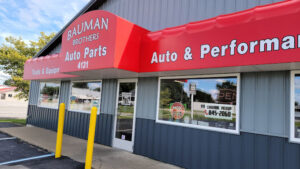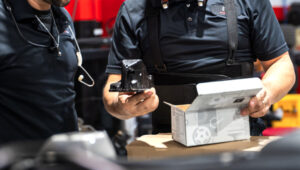Three emerging factors can set distributors apart from competitors, giving them significant advantages in selling to repair outlets
Fort Wayne, Ind.—Four factors have traditionally been the focus in analyzing light vehicle Do-It-For-Me (DIFM) distribution: ordering systems, availability, pricing, and delivery, according to the latest Lang Aftermarket iReport. While these are important, there are three additional factors emerging in the rapidly changing DIFM market that can provide significant competitive advantages to distributors supplying parts to repair outlets.
“These three emerging factors complement the four traditional ones and can set distributors apart from competitors, giving them significant advantages in selling to repair outlets in the rapidly evolving Do-It-For-Me market,” states the report, “which will generate over 90% of light vehicle aftermarket product growth over the next five years.”
The following are highlights from Lang’s analysis.
Conventional Competitive Factors
Four competitive factors are traditionally regarded as critical to distributors’ success in supplying parts to repair outlets (commercial accounts). These traditional factors include ordering systems, product availability, product pricing, and timely product delivery.
In the changing DIFM distribution market, these traditional factors are necessary but not always sufficient for distributors to successfully compete in supplying DIFM installers.
Technical Information: Emerging Factor 1
Technical information is critical for service outlets to perform rapid diagnostics and repair of vehicles, which have steadily increased in complexity over the years.
Since carmakers and parts manufacturers hold most automotive technical information, distributors can partner with these two groups to promote the use of their products and brands by providing needed technical information to repair outlets. Lang notes that providing technical information to DIFM outlets can give distributors a significant advantage and enable them to offer installers benefits that are not readily available from competitors.
Customer Acquisition: Emerging Factor 2
Distributors can add value to DIFM outlets by helping them to attract service bay customers. This enables distributors to provide benefits beyond the supply of products, which is the basis on which most distributors compete in the DIFM market. Banner programs and o2o transactions are two ways that distributors can help installers attract bay customers.
Banner Programs
Banner programs provide marketing and advertising expertise that programmed warehouses and their jobbers can offer to installers to help them attract service bay customers.
Banner programs reinforce the relationship between distributors and installers while helping to expand the business of installers and increase the volume of products they can purchase from dDistributors.
o2o Transactions
Online-to-offline transactions (o2o) are gaining traction in the DIFM market, enabling distributors to help installers to attract customers.
In online-to-offline auto repair transactions, distributors allow consumers to purchase parts and schedule auto repair through an authorized network of repair outlets. eCommerce has seized the lead in o2o auto repair, particularly with tires, batteries, and common repair jobs like brakes. However, Lang states that brick and mortar distributors have ways to use o2o strategies to boost the bay activity of the installers they supply.
Parts on Hand: Emerging Factor 3
Distributors have two general ways to reduce the pressure to deliver parts rapidly to installers for cars in their bays.
• Distributors can enable installers to stock the parts that they use on a repetitive basis so when jobs arrive in their bays, the need for quick delivery of parts is reduced.
• o2o transactions can also reduce the need for quick delivery of parts. Distributors enable the customer to order a repair job online. Distributors then deliver the required parts to installers before the vehicle’s arrival. o2o transactions are increasing across a broad range of auto repair jobs.
These two strategies require financial resources, computing expertise, and unique o2o capabilities that not all distributors have in sufficient amounts. These two strategies can enable distributors to extend additional benefits to their installer customers, while reducing the cost of rapid delivery.
Winning Competitive Advantage
Technical information, customer acquisition, and needed parts-on-hand are three competitive factors that can give distributors the winning edge in supplying Installers. These factors provide added value beyond order systems, availability, pricing, and delivery, which are the primary focus of most distributors who supply installers.







Comments are closed.